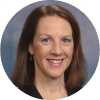Cultivating Diabetes Educators
Oct 13, 2017, 16:59 PM
Autumn has come to Central New York. The leaves are turning beautiful colors, and the farmer’s market in Syracuse is bursting with wonderful fruits and vegetables. I left the market this past Saturday with a very heavy bag filled with apples, eggplant, zucchini, red and green peppers, onions, and greens. I am reaping the benefits of farmers’ efforts in cultivating their gardens and fields. This made me think of an analogy related to diabetes educators. It is time to cultivate, or foster the growth of, new diabetes educators.
As a group, diabetes educators are primarily composed of 45+ year olds, mostly female, mostly Caucasian/white, with a primary discipline of nursing or nutrition. We have many years of professional experience, but are generally not mentoring others to enter our field. This information comes from AADE’s recent National Practice Survey.
How can we cultivate new diabetes educators?
Start from seed: Connect with a person who has an interest in diabetes. Do you know a person with diabetes, a caregiver, or a professional around you who may want to be more involved in the field of diabetes? Are there opportunities for those who are currently support staff in your setting to move through the practice levels and become a diabetes specialist? Explain the opportunity of becoming a peer supporter, especially as Diabetes Prevention Programs begin and expand, and introduce them to the AADE Career Path Certificate Program where they can learn about Diabetes Paraprofessional Levels 1 and 2, and Diabetes Educator Levels 1 and 2, as career possibilities.
Look for those with an interest, ask them if they know about the opportunities, explain the options, mentor, and enjoy the fruits of your labor.
Grow from seedlings: Invite peers and professionals to become more engaged in the specialty of diabetes education and support. Do you work with young professionals? Are you involved in an academic program in a field that could lead to a diabetes specialization like nursing, nutrition, physical activity, pharmacy, psychological professionals or others? When I teach in the physical therapy program at SUNY Upstate, I expose the students to the field of diabetes education. You can tell those around you about the many opportunities in this specialty area, from peer supporters to credentialed diabetes professionals. Look at groups who are not currently represented strongly, including people of various cultural groups who can enjoy shared experiences with those with diabetes.
Water and fertilize: Mentor those who have an interest in diabetes to become peer counselors or certified diabetes professionals through formal and informal avenues. Some people mistakenly think that a person must have their CDE or BC-ADM to be a member of AADE. A membership in AADE gives benefits to CDEs, BC-ADMs, those working toward a certification, and others who may not have the ability to become credentialed but are working with people with diabetes; we can foster growth in diabetes self-management education and support for professionals and peer counselors. It is important that we let others know that the benefits of AADE include access to education, some free and some at a cost, from webinars to live educational events, that can help a person to improve practice and/or work toward a certification.
Enjoy the harvest: Look at those you impacted as they become involved in diabetes education and support. Know that you have touched the life of that individual, as well as people with diabetes, prediabetes and those who care for them.
We all can encourage diabetes education and support providers of the future. Look for those with an interest, ask them if they know about the opportunities, explain the options, mentor, and enjoy the fruits of your labor as you cultivate new diabetes educators.
 About the Author
About the Author
Karen Kemmis is a physical therapist and certified diabetes educator, and also holds certifications in Pilates for rehabilitation and exercise for aging adults. She is based out of SUNY Upstate Medical University in Syracuse, NY and splits her time between a Joslin Diabetes Center affiliate, an outpatient rehabilitation department, and a PT program where she is an adjunct professor.
View Bio & Previous Posts